Validation Regions for non-prompt background estimation in same charged \(W^{\pm}W^{\pm}\) scattering
Sebastian Ordoñez
jsordonezs@unal.edu.co


6th Colombian Meeting on High Energy Physics
3rd of December 2021

Motivation
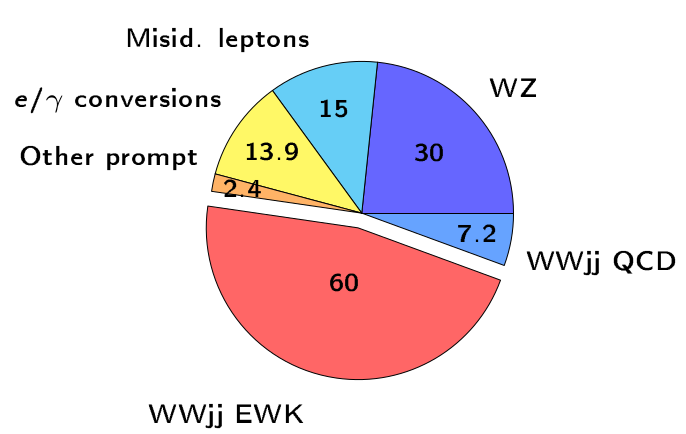
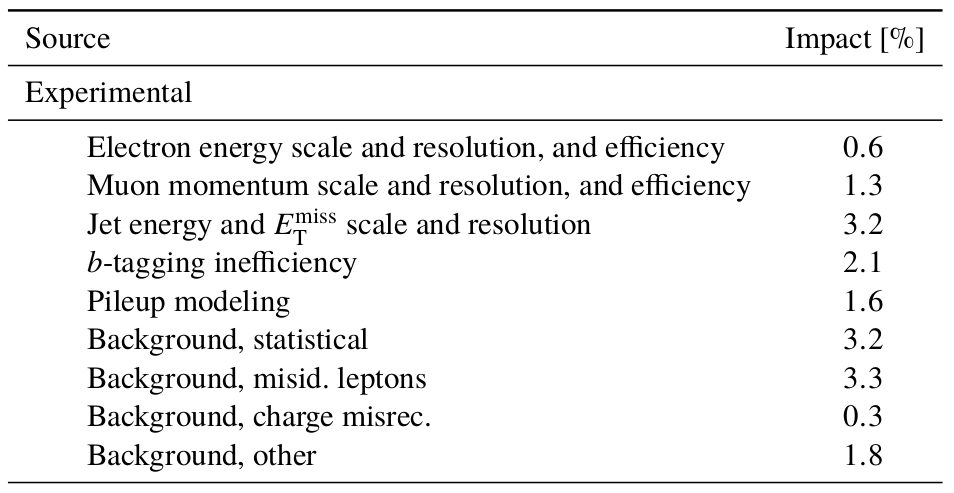
- Misidentified leptons are the second largest background in the \(W^{\pm}W^{\pm} jj-\) EW signal region.
- The largest experimental uncertainty comes from the data-driven estimation of the non-prompt background.
Non-prompt background in the \(W^{\pm}W^{\pm} jj\)-EW analysis
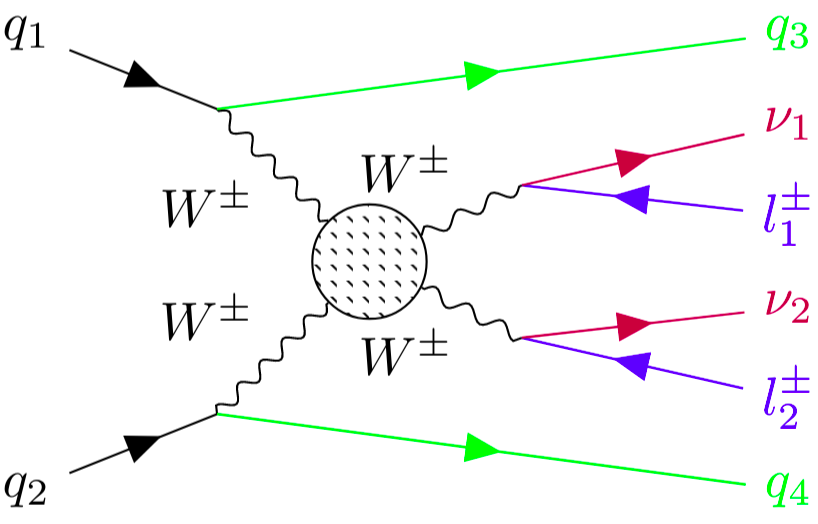
Final state: two leptons, \(E_{T}^{miss}\), two jets.
Data-driven Matrix Method
In order to calculate the non-prompt background, four lepton categories are used.
- In this study the fake factor \(F\) is extracted from the dilepton control region.
The reducible background is calculated by using:
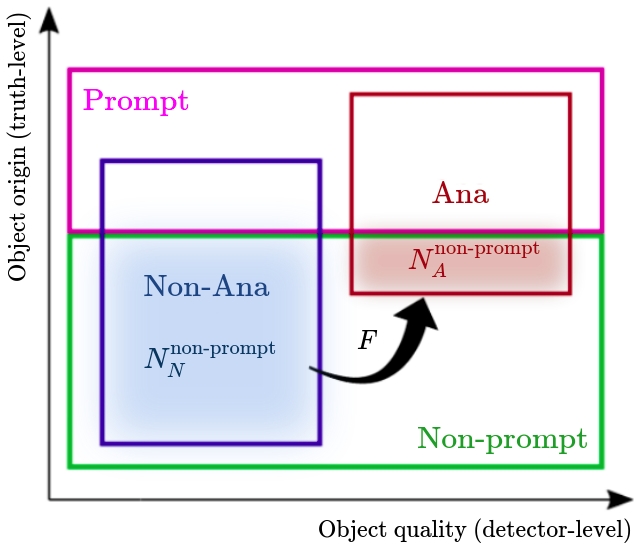
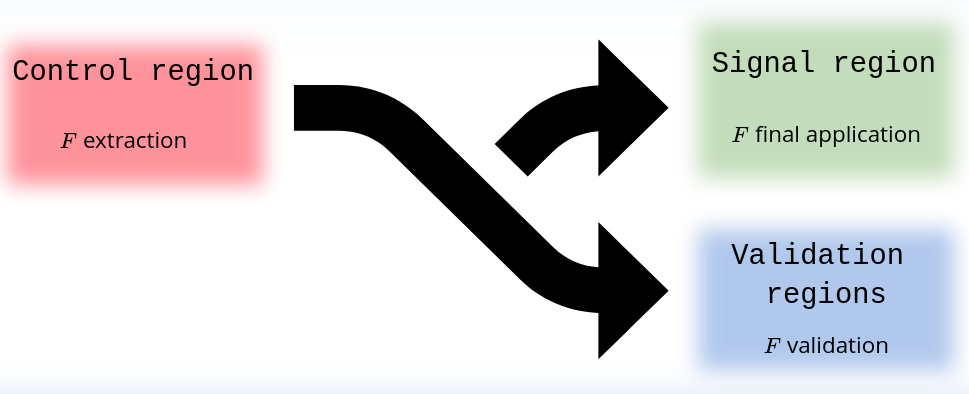

My work!
Trilepton Muon Region
Non-prompt muons in the signal region originate almost exclusively from \(b\) quarks coming from \(t\bar{t}\) events.
- By requiring both muons to have an identical electric charge we reject a lot of events coming from \(Z+jets\) and \(WZ\) samples.
- Most events will originate from \(t\bar{t}\) and we get a similar composition to that of the signal region.
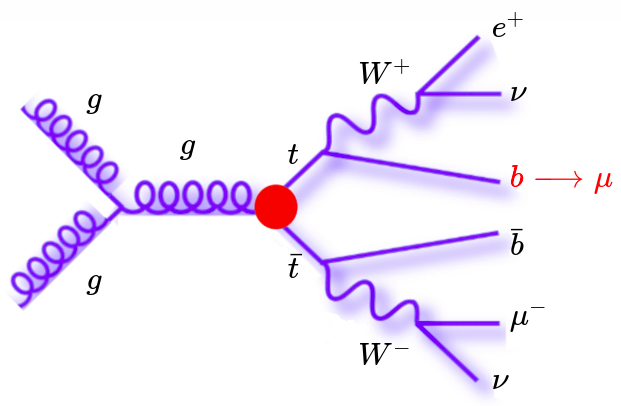
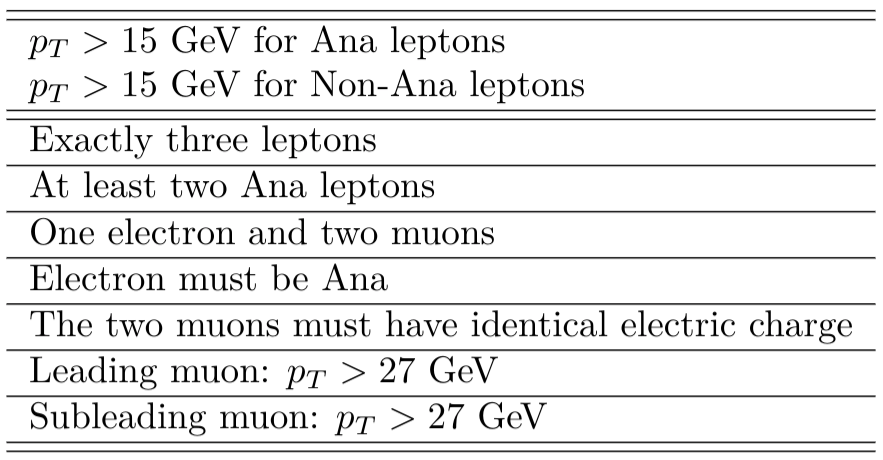
Motivation
Final selection
Trilepton Electron Region
Non-prompt electrons in the signal region originate primarily from light flavour jets of \(W+jets\) events. However, it is not possible to achieve that composition using a trilepton region.
That is why we look for a similar composition coming from \(Z+jets\) events.
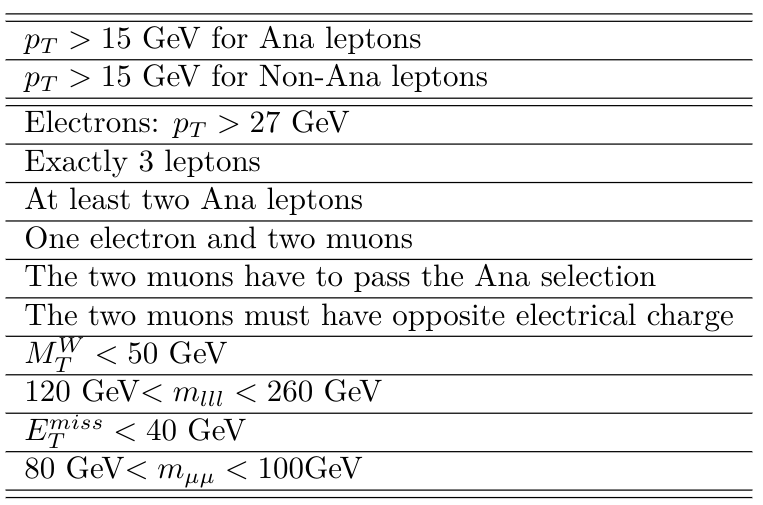
Final selection
Motivation
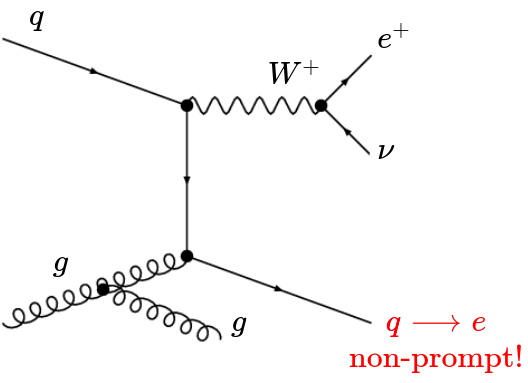
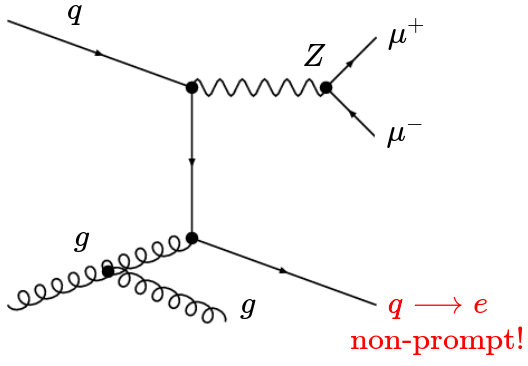
Evaluation of the Trilepton muon Region
Statistic of the non-prompt muons
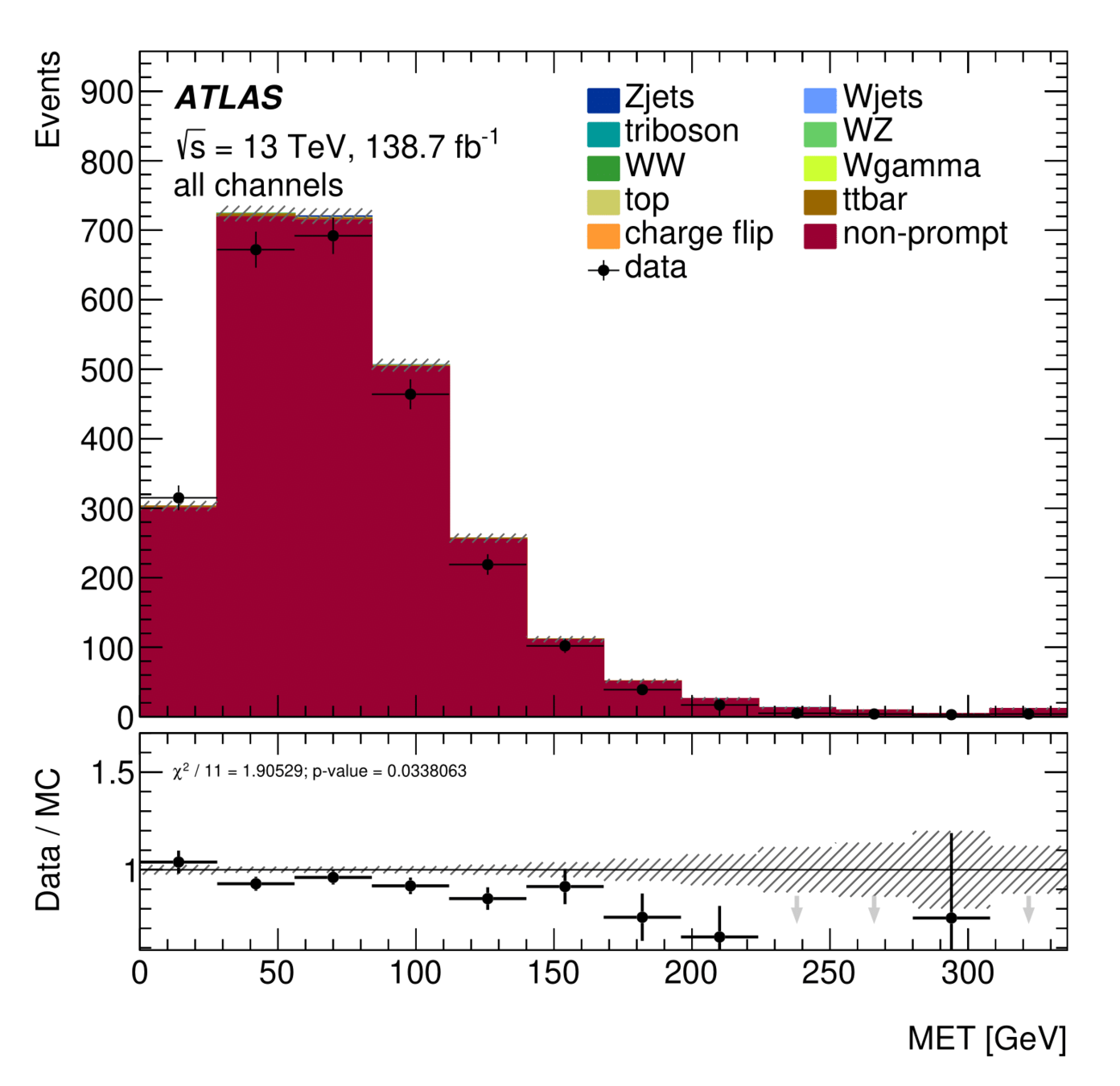

\(E_{T}^{miss}\) distribution for Non-Ana and Ana events
Non-prompt composition
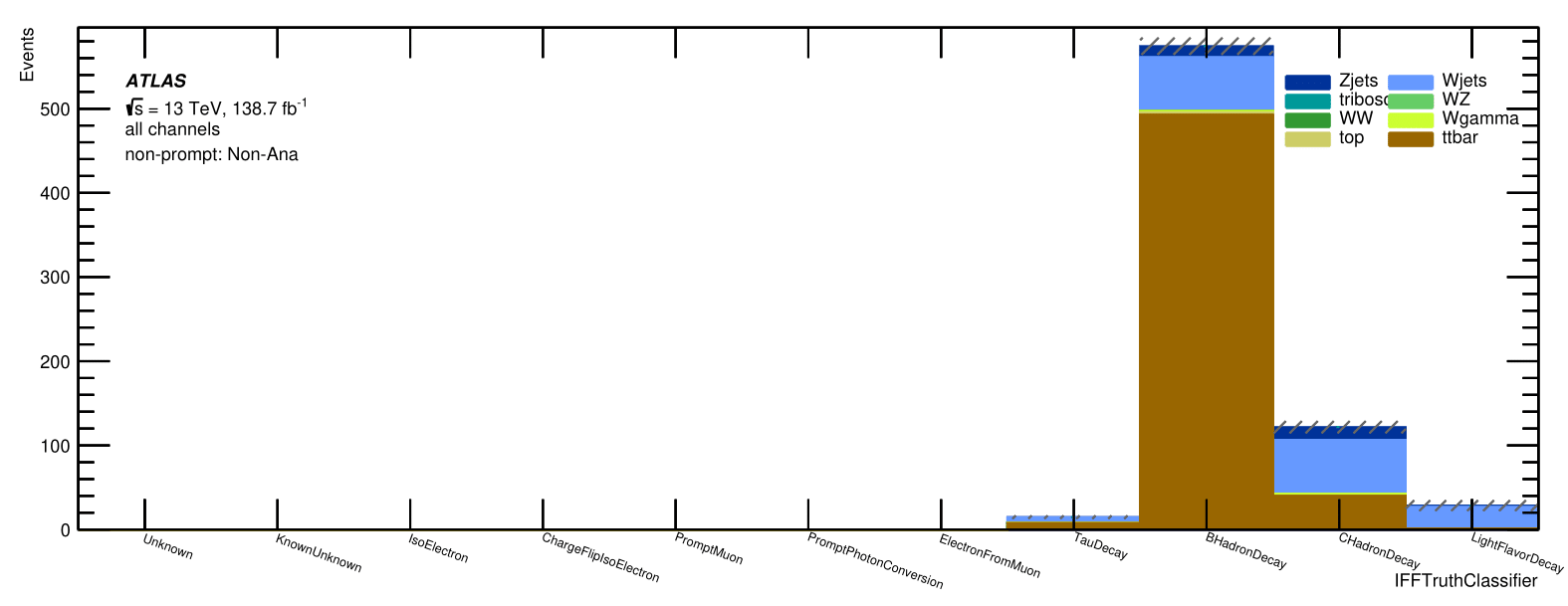
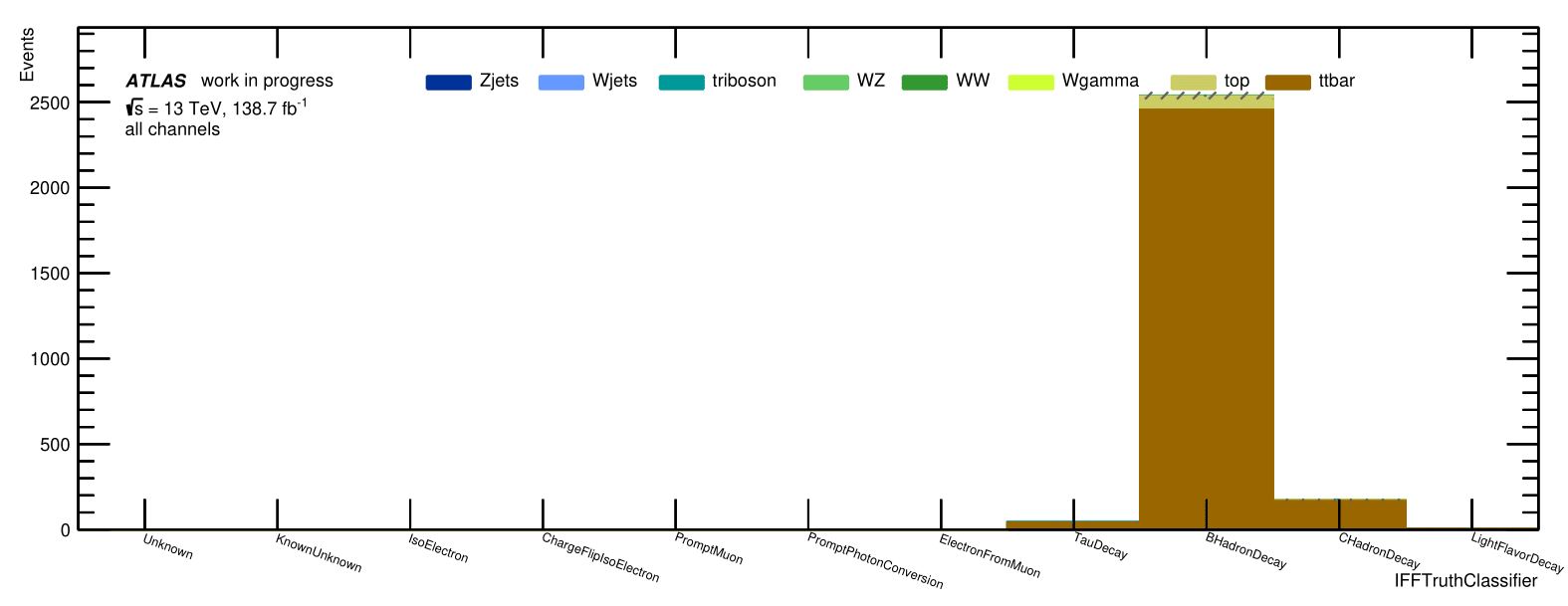
Signal Region
Trilepton muon Region



Evaluation of the Trilepton muon Region
Statistic of the non-prompt muons
\(E_{T}^{miss}\) distribution in the Low \(m_{jj}\) region
The contribution of non-prompt muons in the Trilepton muon region is almost 50%. It was achieved a higher contribution than that of the LowMjj region.
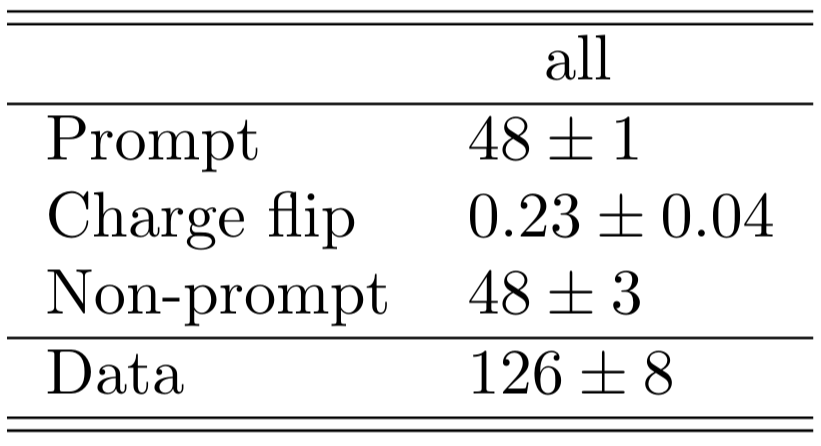
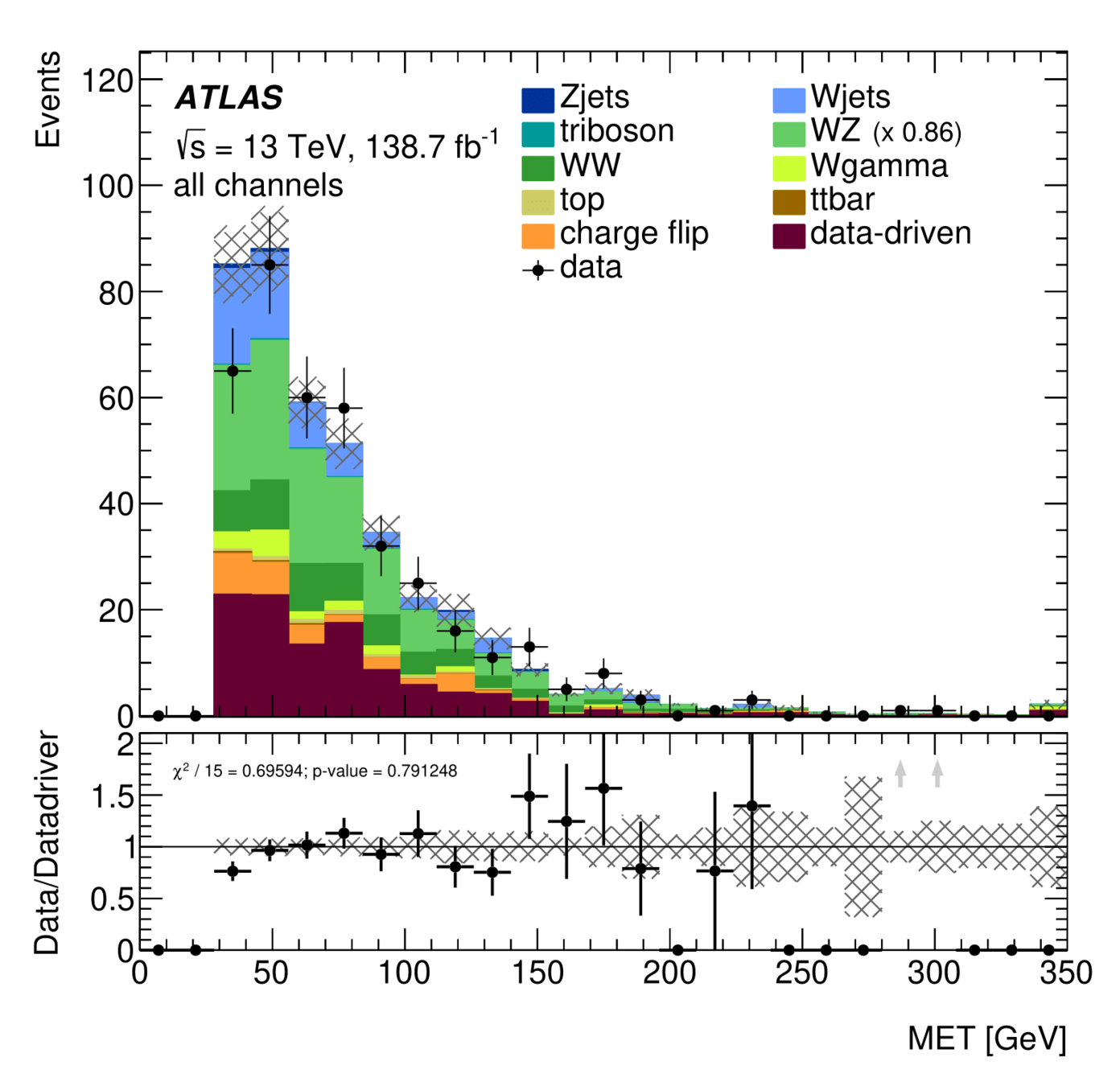
Evaluation of the Trilepton Electron Region
\(m_{\mu\mu}\) distribution for Non-Ana and Ana events
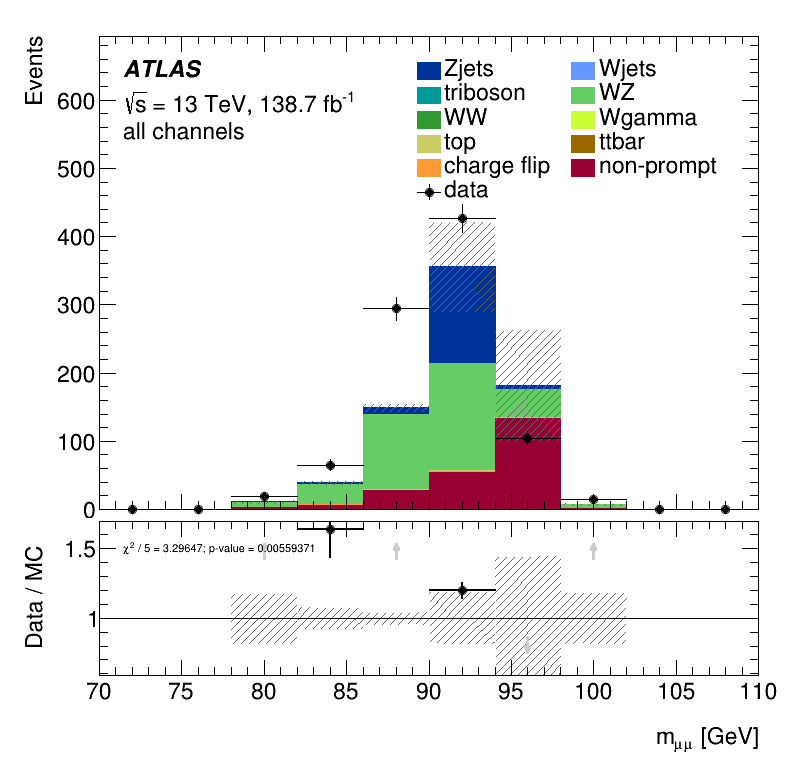

Statistic of the non-prompt electrons
Non-prompt composition
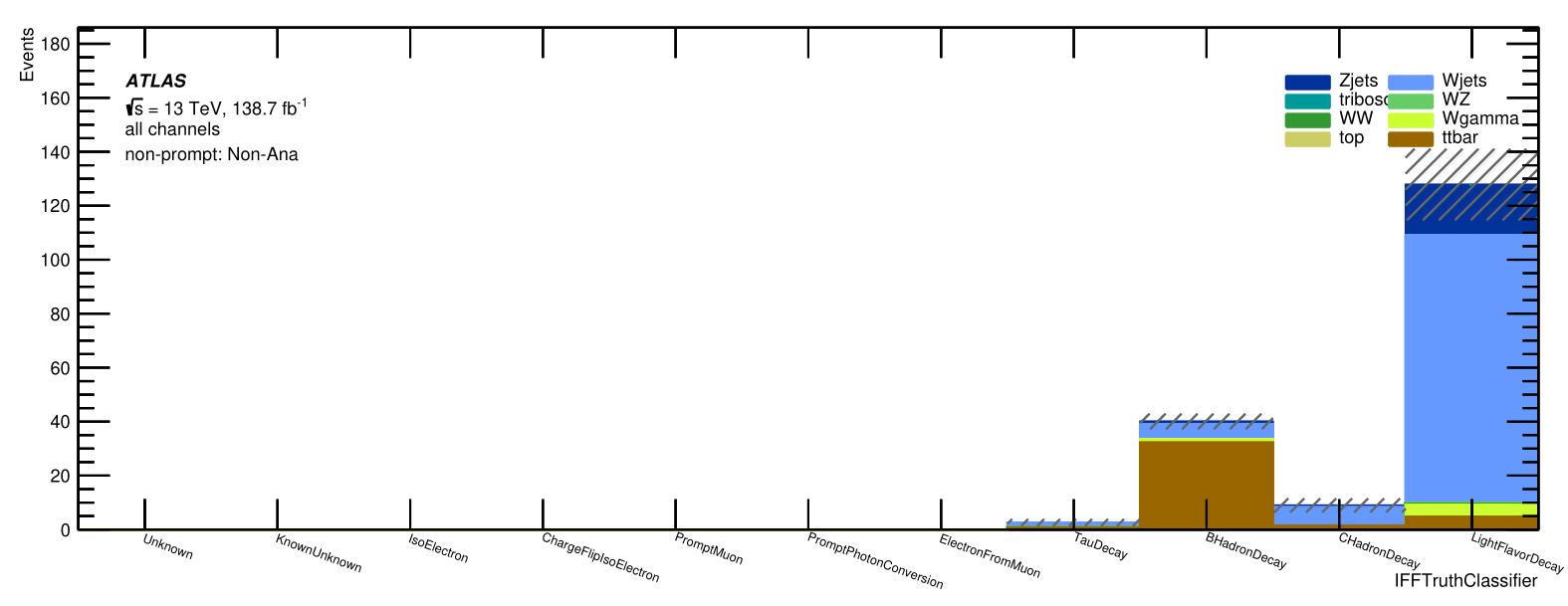
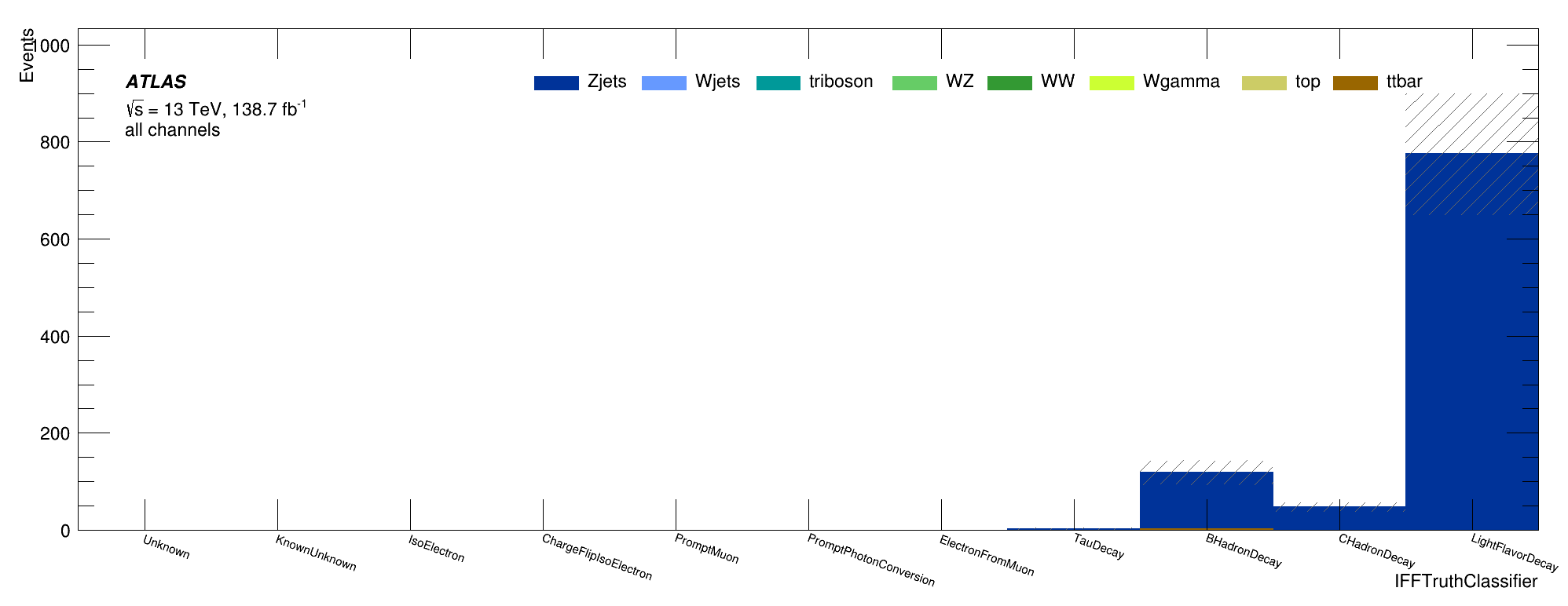
Signal Region
Trilepton electron Region




Evaluation of the Trilepton Electron Region
Statistic of the non-prompt electrons
The contribution of non-prompt Ana electrons in the Trilepton electron region is about 31%. Once again, it was achieved a higher non-prompt contribution than that of the LowMjj region.
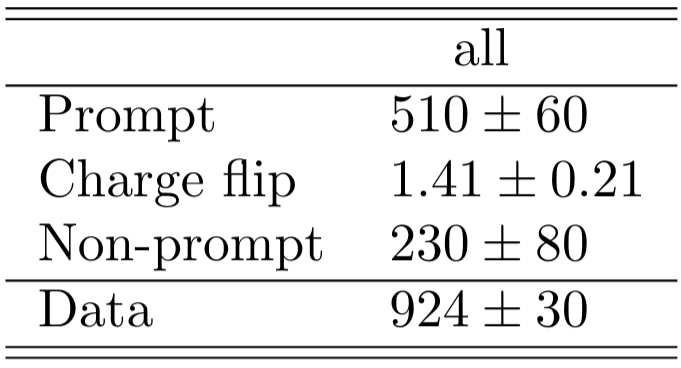
- The fake factor is extracted from MC in control region and then applied to MC in the Validation Region.
Closure Tests
Monte Carlo closure test
- The \(N_{A}^{\text{non-prompt}}\) estimate given by the MC-data-driven method is compared to \(N_{A}^{\text{non-prompt}}\) which are actually non-prompt according to the MC truth level information (Non-prompt MC).
Data closure test
- The fake factor is extracted from data in the control region and then applied to data in the validation region.
It is investigated how well the collision data is modellled by the sum of the Monte Carlo predictions for the prompt background and the non-prompt background estimated by the data-driven technique.
The number of non-prompt events estimated by MC-data-driven in this region is singificantly above the MC events according to truth-level information.
\(p_{T}\) distribution for non-prompt muons
Trilepton muon region
Results Monte Carlo Closure Tests
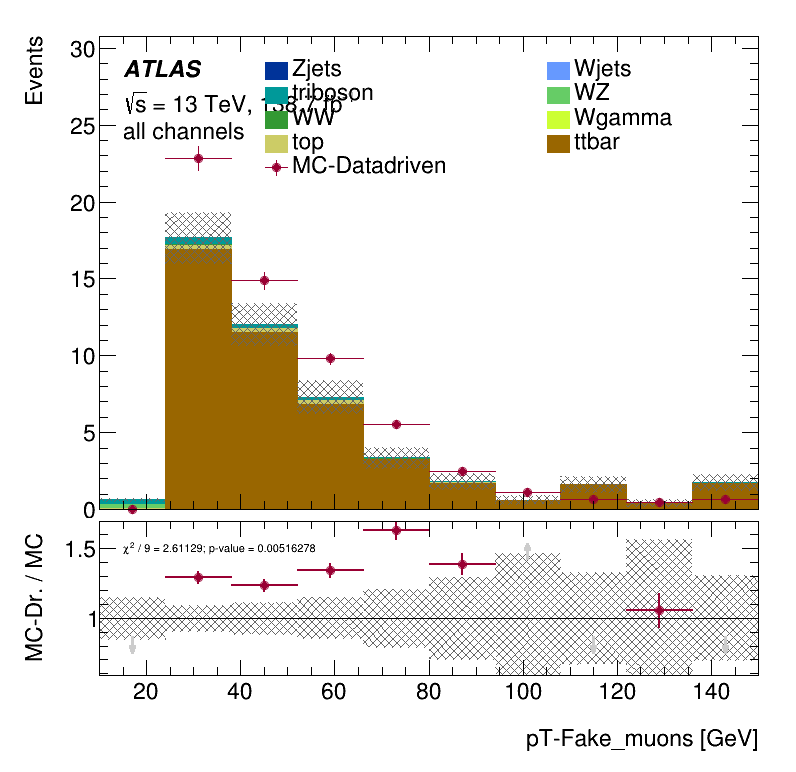

Trilepton electron region
The number of MC-data-driven events is notably below the MC events according to truth-level information.
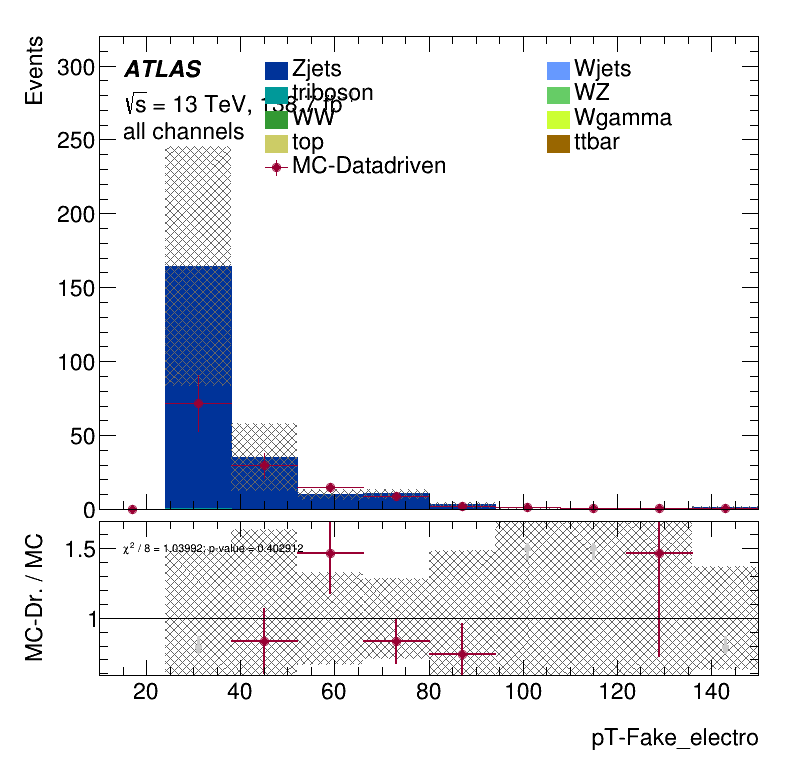
\(p_{T}\) distribution for non-prompt electrons



The result found in the MC closure is confirmed here. It is clear a not negligible overestimation of data.
\(m_{lll}\) distribution
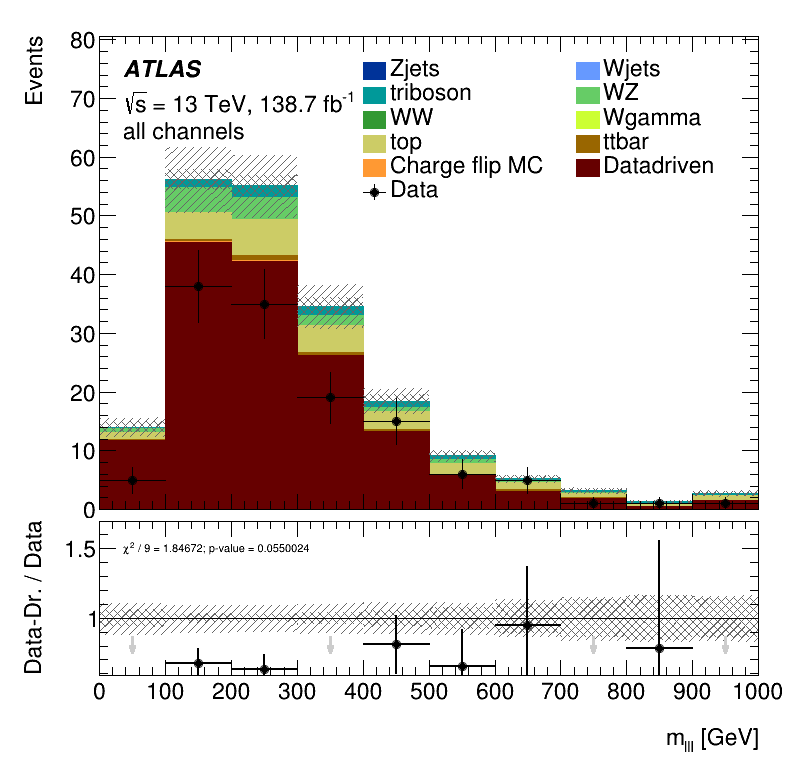
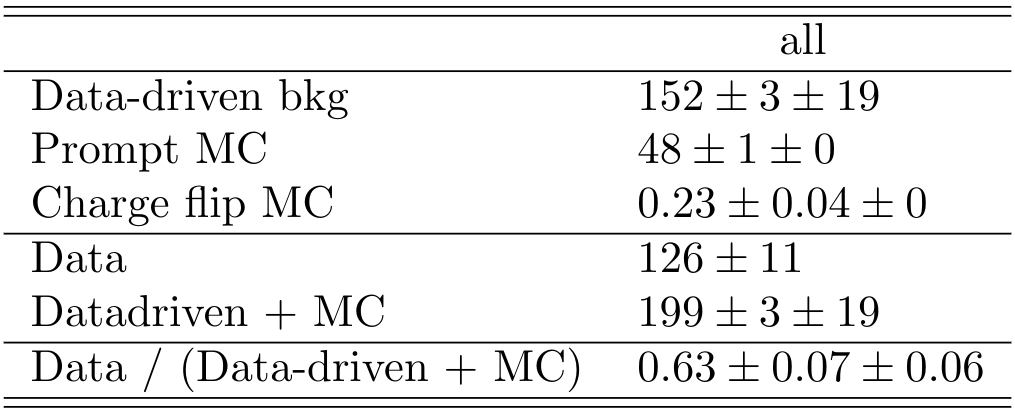
Results Data Closure Tests
Trilepton muon region
Trilepton elecrton region
It is clear a significant underestimation of the data. This underestimation is approximately a factor two in the non-prompt estimate.
Electron \(p_{T}\) distribution
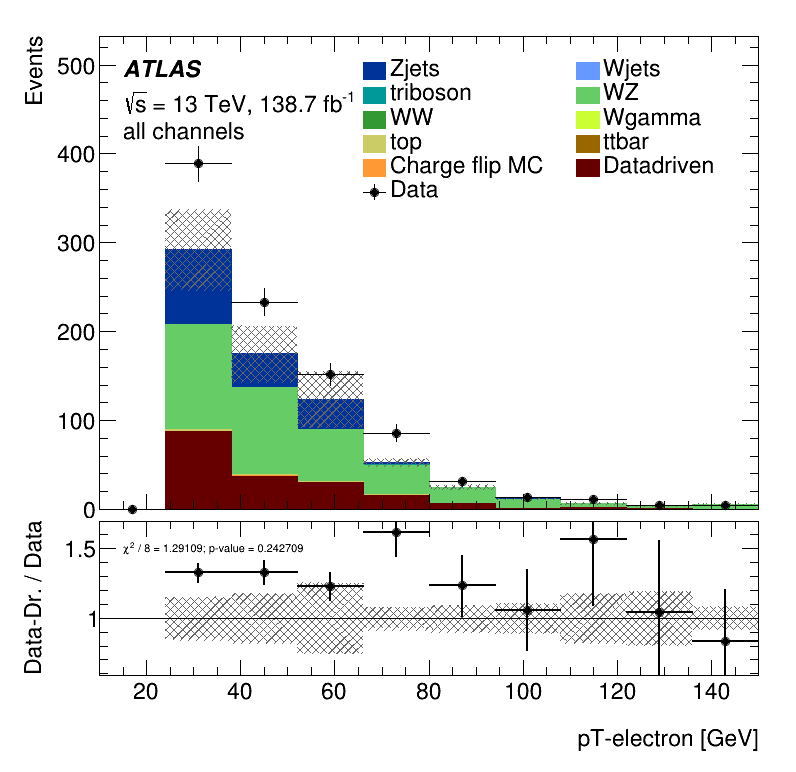
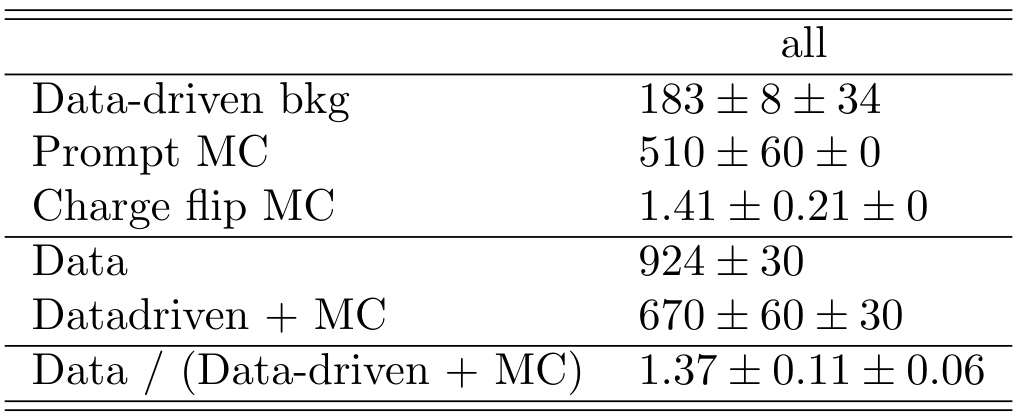


Conclusion and Outlook
- Since there were found significant deviations with the data, it is necessary to check again the whole procedure followed in the control region before an application in the signal region.
- Some of the mismodelling found could be attributed to differences between the composition of these validation regions and that of the signal region.
- Given that we are considering validation regions with three leptons and the fake factors are extracted from a dilepton region, it is necessary to make additional adjustments in the set up. Even so the regions have very different selections and to have a perfect modelling could be rather difficult.
- The closure observed in the LowMjj region could be due to a compesation between the underestimation for electrons and the overestimation for muons found in the trilepton regions.
[ComHEP 2021] Fake study
By Sebastian Ordoñez
[ComHEP 2021] Fake study
- 804



